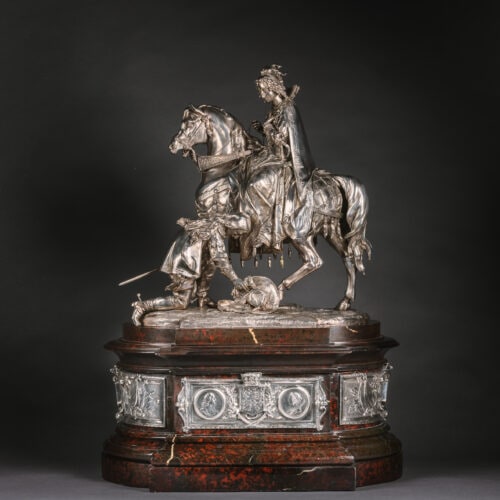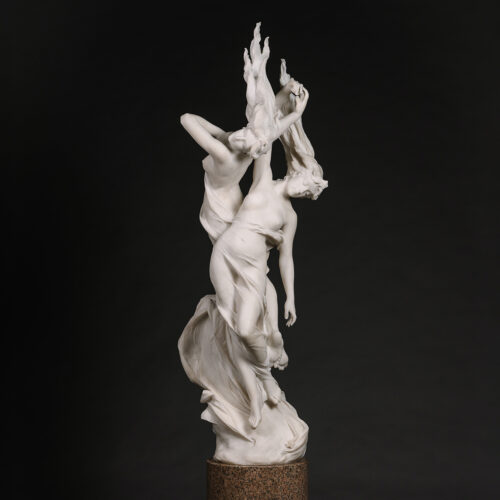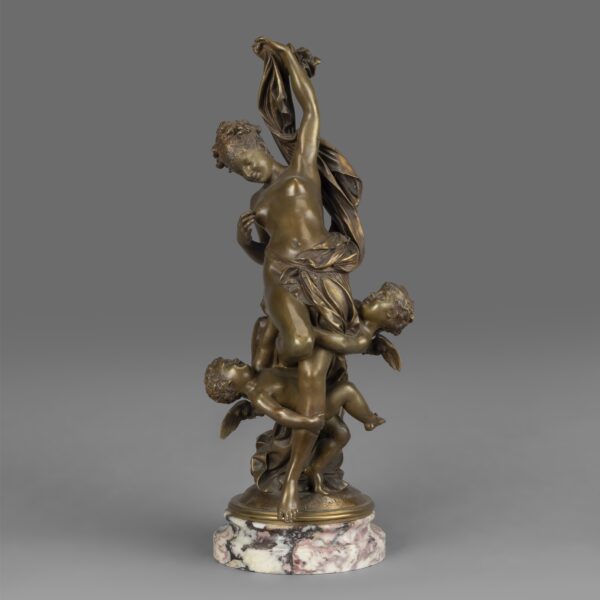Isidore-Jules Bonheur (French,1827-1901)
Un par de modelos de bronce grandes y finamente patinados de una vaca y un toro
£26,000
A Pair of Large and Finely Patinated Bronze Models Of A Standing Bull and a Running Cow After Models by Isidor-Jules Bonheur, Cast on a Naturalistic Base. Signed...
Dimensiones
Height: 39 cm (16 in)Descripción
A Pair of Large and Finely Patinated Bronze Models Of A Standing Bull and a Running Cow After Models by Isidor-Jules Bonheur, Cast on a Naturalistic Base.
Signed ‘I BONHEUR’ and stamped ‘PEYROL EDITEUR’.
Bonheur was a regular exhibitor at the Paris Salon and his naturalistic depiction of farm animals, including cattle, was one of his most popular subjects. The bronze was cast by his brother-in-law, Hippolyte Peyrol, who ran one of the most successful art foundries in Paris at this time.
Francés, Circa 1890.
Fecha
Alrededor de 1890
Origen
Francia
Medio
Bronce patinado
Firma
Signed 'I BONHEUR' and stamped 'PEYROL EDITEUR'.
Isidore-Jules Bonheur (1827-1901) was the son of the painter Raymond Bonheur and younger brother of Rosa Bonheur, the famous sculptor. He was born in Bordeaux and studied painting, at first with his father and then with the Ecole des Beaux Arts in Paris, moving on to sculpture in 1848.
He made his debut at the Paris Salon in 1848 with a painting and plaster study of the same subject ‚‘African horseman attacked by a lioness‚’. From then onwards, Bonheur exhibited regularly at the Salon as well as other exhibitions, winning medals in 1865 and 1869 together with the prized Gold Medal at the Exposition Universelle of 1889.
He was awarded the Legion d‚’Honneur in 1895.
Most of Bonheur’s casts were by his uncle by marriage, Hippolyte Peyrol, whose tiny foundry mark is often very difficult to find.
Bonheur’s studies range from farm animals, bears and tigers in a very naturalistic vein to equestrian groups. Although noted primarily for his small groups he did complete two large scale commissions, one to his sister Rosa, at Fontainbleau and the other, two stone lions at the steps of the Royal Palais de Justice, Paris. Bonheur became part of the group of animal sculptors of the late nineteenth century known as ‚‘Les Animaliers‚’
Working in a realistic manner, Bonheur was an acute observer of nature – his animals were not ‚‘humanised‚’ but modelled to catch a pose characteristic of the particular species. He achieved this particularly well with his sculptures of horses, which, usually more relaxed than spirited, are among his most successful works.
Literature
Jane Horswell, Bronze Sculptures of ‚‘Les Animaliers‚’ , p201
Pierre Kjellberg, Les Bronzes du XIX Siècle, p101
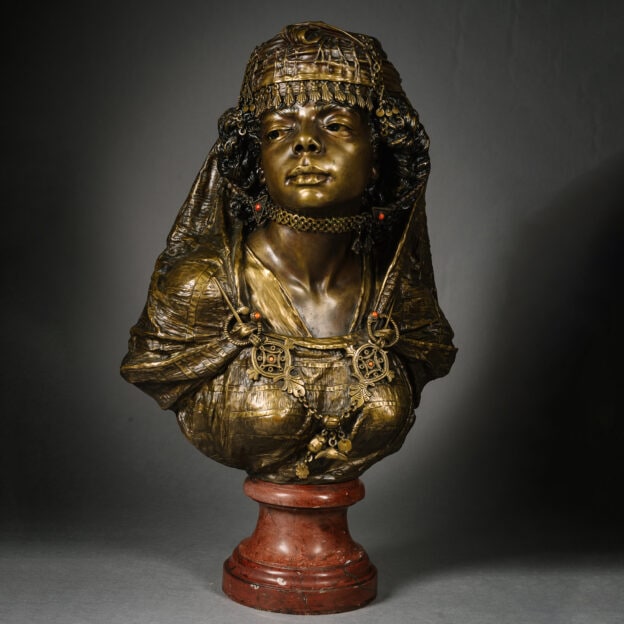




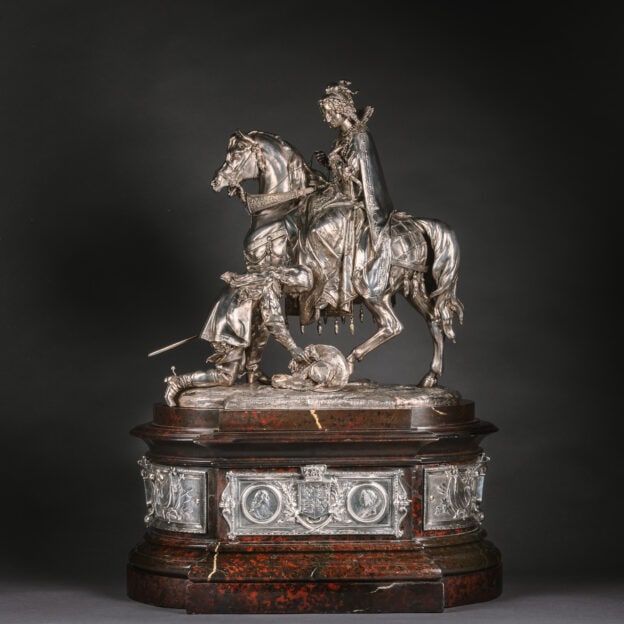
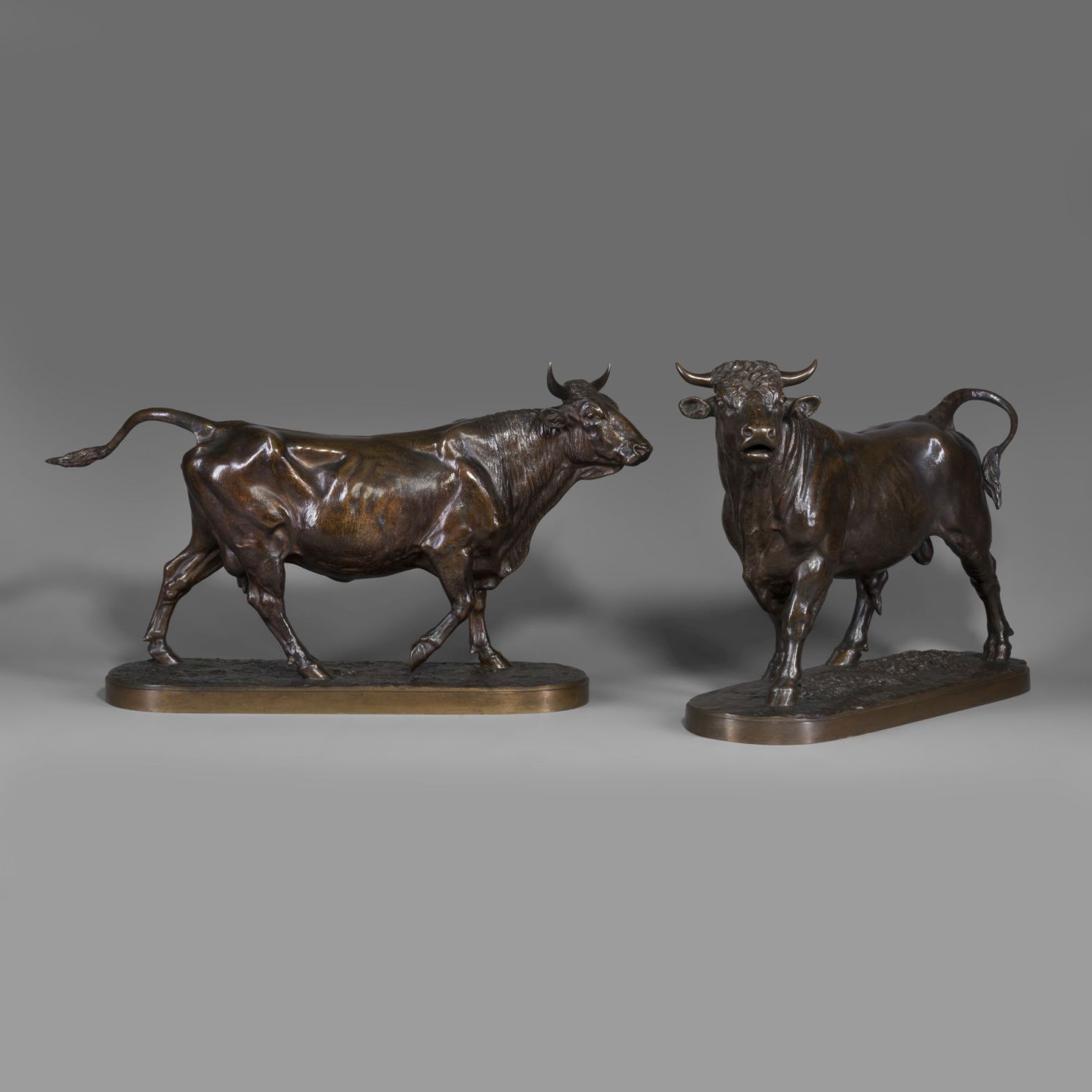

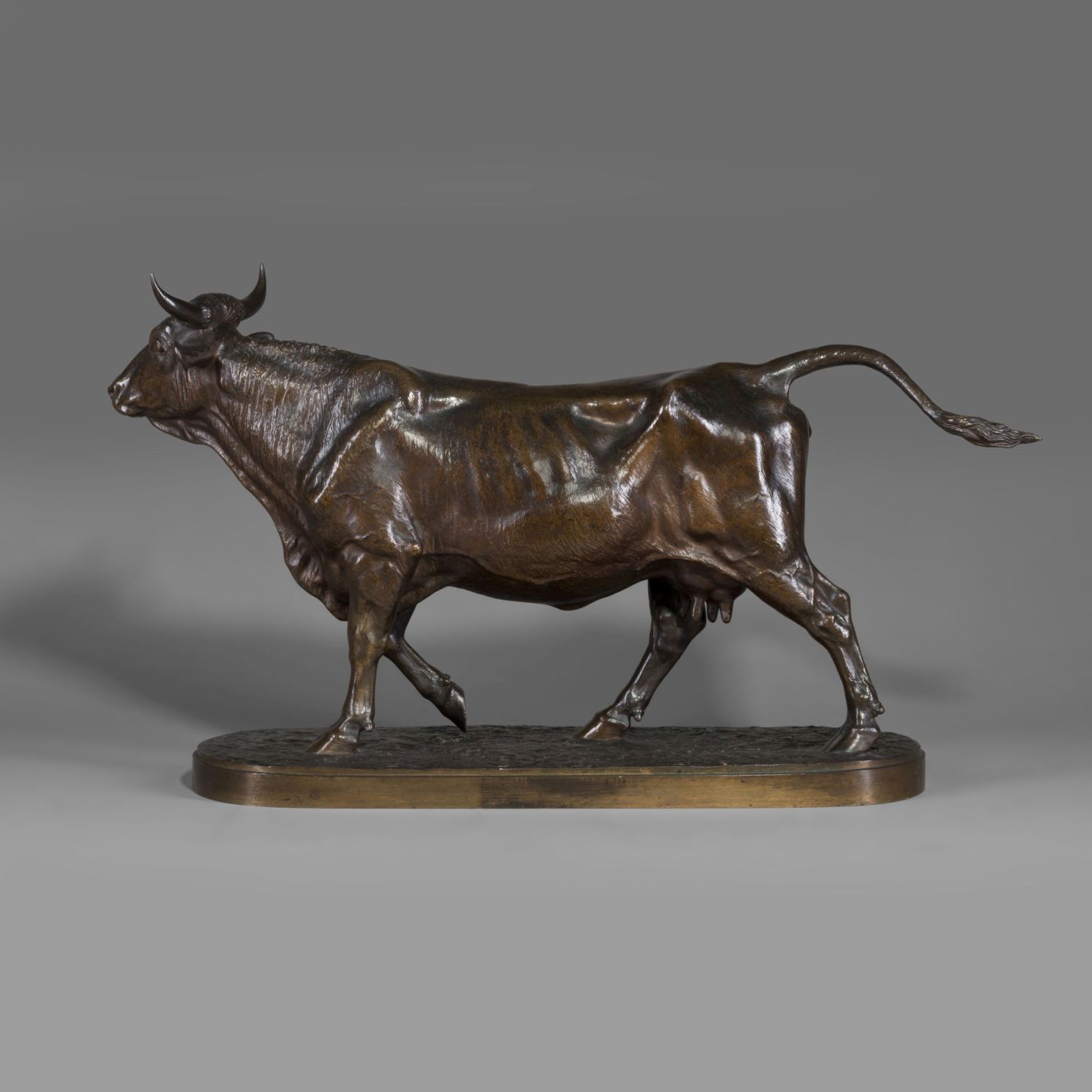
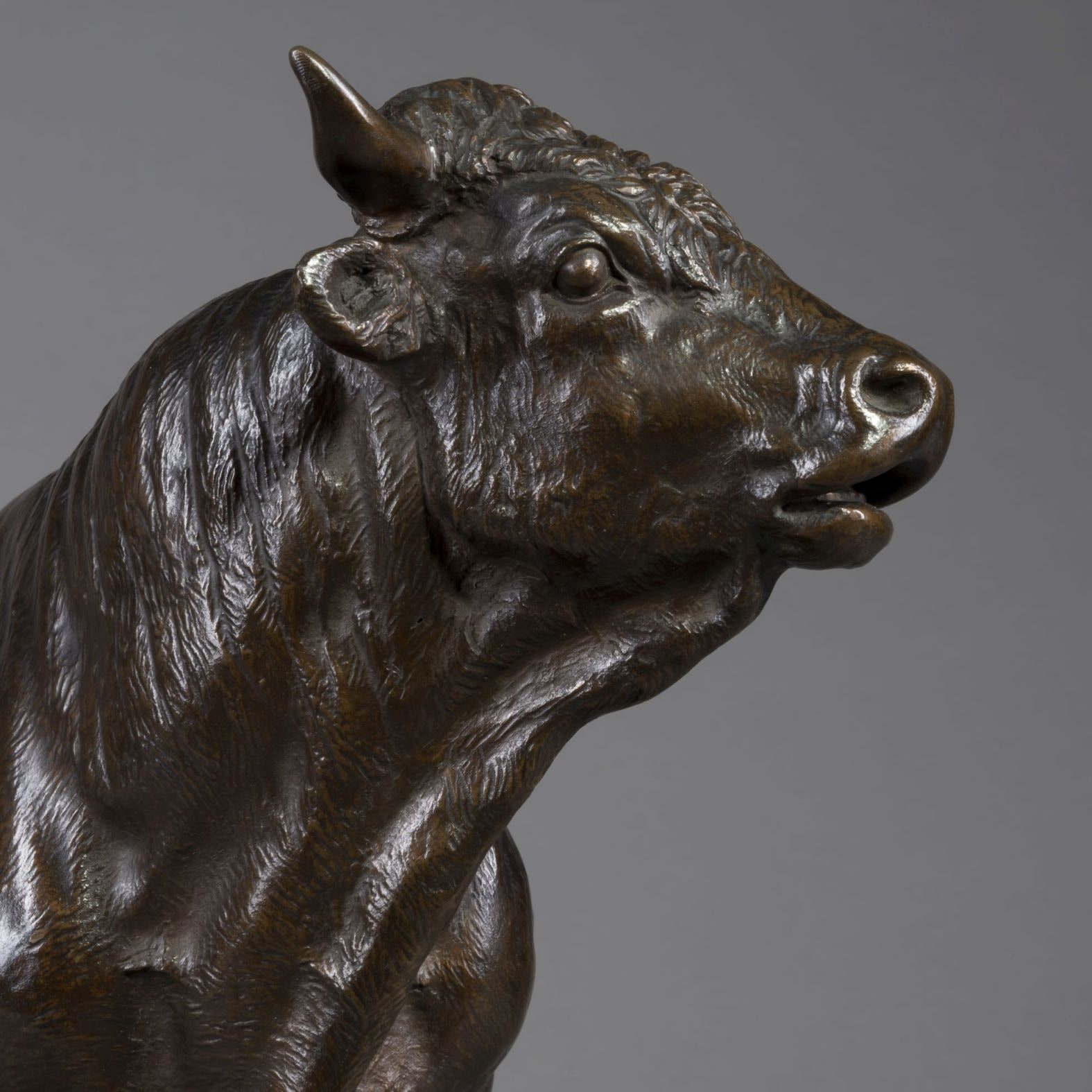
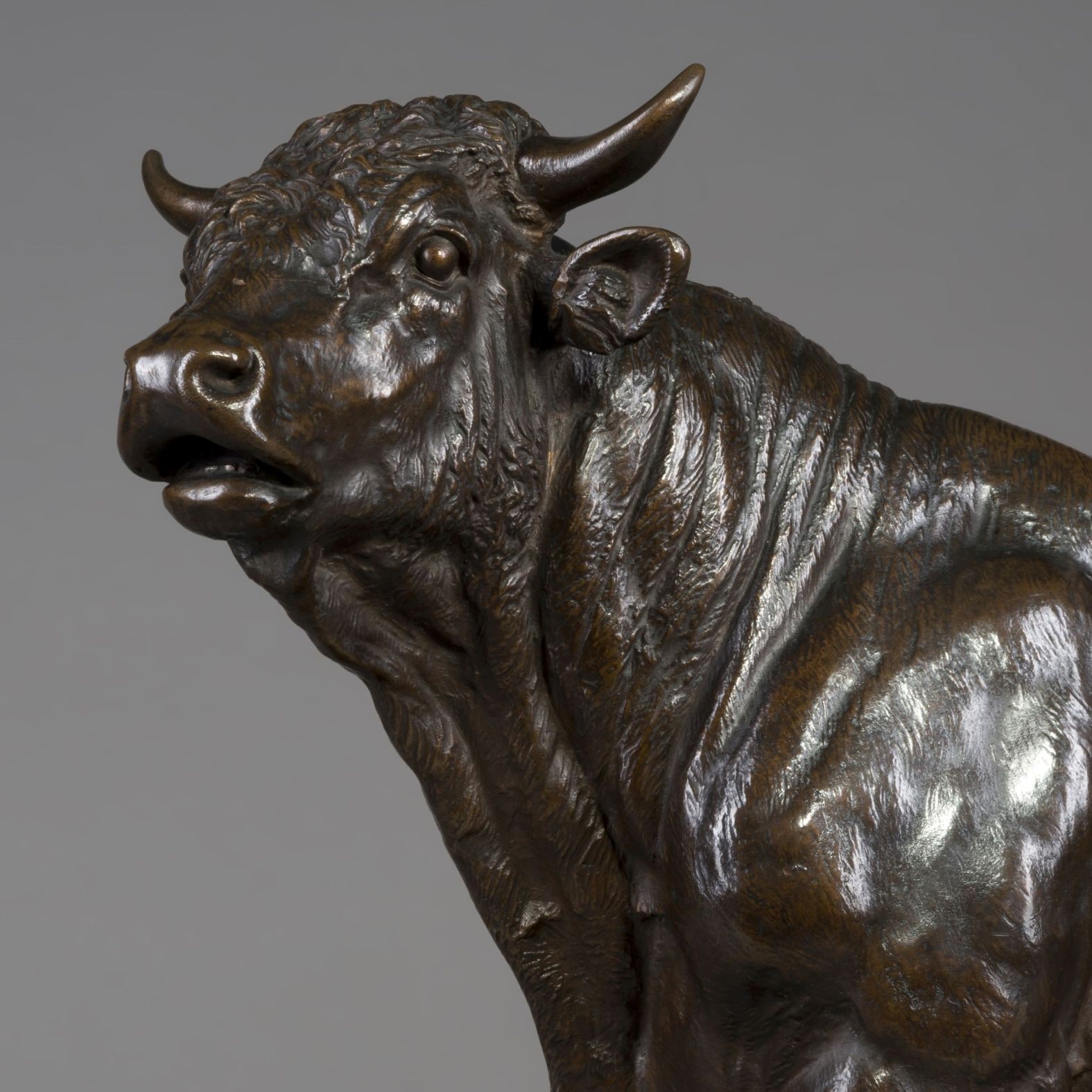


 Imprimir
Imprimir